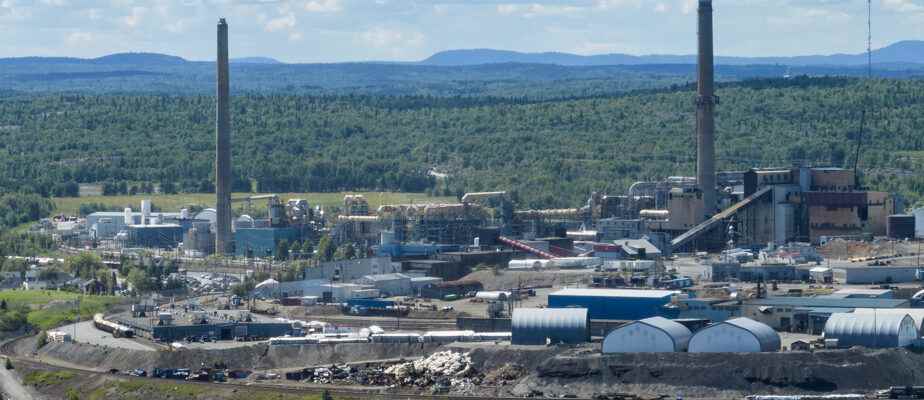Speaking of an “intermediate step” to undertake, Public Health recommends that the Horne Foundry reject 15 nanograms of arsenic per cubic meter in the air, a figure that remains five times higher than the current Quebec standard.
Posted at 2:03 p.m.
“For arsenic, we consider that an annual average concentration of 15 ng/m3 is a value which will make it possible to protect against adverse health effects for young children, for unborn children. […] This is an interim value until we get there. And it must be achieved as quickly as possible, ”explained on Wednesday the scientific adviser for Public Health, Dr.r Mathieu Valcke, without however advancing on a precise timetable.
While it is true that this figure “remains higher than the standard of 3 ng/m3 “, the expert insisted on the fact that this recommendation is first presented “with a view to protecting” the youngest, in particular by preventing “a drop in the intelligence quotient” in their development.
“The standard of 3 is more oriented around the concern to protect an exposure that will last throughout life, in order to prevent the appearance of cancers. It is therefore an intermediate step, on the way to reaching the standard,” reiterated Mr. Valcke, for whom an emission of 15 ng/m3 will still contribute “to reducing the risk of lung cancer for generations to come”.
Quebec recommends that under no circumstances should the maximum daily concentration of arsenic emissions exceed 200 ng/m3. The Horne Foundry, owned by the multinational Glencore, currently releases up to 100 nanograms of arsenic into the air per cubic meter, or 33 times more than the Quebec standard, which is 3 ng/m³.
“It is expected that the levels we propose will be taken into account in the continuation of the steps taken by the government”, indicated on Wednesday the national director of public health, the Dr Luc Boileau, at a press conference. “We must give the population back an environment and a living environment in which they can have confidence, as soon as possible,” he insisted, maintaining that the objective remains to reach the standard of 3 ng/m3.
Factory capacity not taken into account
At the end of July, Radio-Canada reported that the Horne Foundry proposed to the Legault government to implement an arsenic emission ceiling between 20 and 64 ng/m3 by 2027. Public Health admits from the outset that it did not take this company target into consideration when formulating its recommendation. It will therefore be up to the Ministry of the Environment to decide.
“The idea is to propose an exposure value that will allow us to ensure that we protect the population. […] That doesn’t necessarily mean that as soon as you go beyond it, there are automatically effects that will appear. We give ourselves a beacon, ”added the Dr Valcke.
For lead emissions, Public Health recommends compliance with the annual standard of 100 ng/m3 on average, as well as a daily maximum of 350 ng/m3. Cadmium should be limited to a daily maximum of 30 ng/m3say the health authorities.
In July, the National Institute of Public Health of Quebec (INSPQ) had also concluded that, over a period of 70 years, an excess number of citizens of Rouyn-Noranda, between one and 14, would develop cancer if the company Glencore does not reduce the concentration of arsenic in the air produced by the Horne Smelter.
The City wants to reach the standard
Earlier, Monday evening, the Rouyn-Noranda municipal council unanimously adopted a resolution asking that “the activities of the Horne smelter aim to achieve the environmental standards in force for all heavy metals and fine particles released into the air”.
This resolution, formulated for the attention of the Government of Quebec, is in addition to that of June 13, which called in particular for an interdepartmental action plan centered on the health of the citizens of Rouyn-Noranda. The city council also requested on Monday evening that the next ministerial authorization issued to Glencore by the Ministry of the Environment provide for daily emission ceilings.
Quebec appointed last Thursday Hélène Proteau as State administrator responsible for coordinating government action in the case of the Horne Foundry in Rouyn-Noranda. This was also a request from the municipal council and the mayor, Diane Dallaire.
With Jean-Thomas Léveillé, The Pressand The Canadian Press

